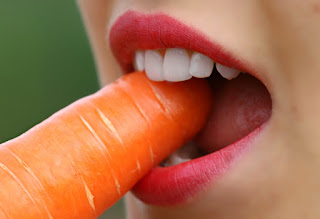Foul smelling from mouth .
Bad breath varies depending on the cause. Some people are very concerned about asthma whether they have bad breath or not. Others smell bad and don't know it. Since it is difficult to detect bad breath, ask a close friend or relative to know if you have bad breath.
Causes
Most breathing begins with the mouth. There are many reasons, including:
Diet. Breaking down food particles in and around your teeth can lead to bacteria and bad breath. Eating certain foods such as onions, garlic and spices can also cause bad breath. After you eat these foods, they enter your bloodstream, travel to your lungs, and affect your breathing.
Tobacco
. Smoking causes bad breath. Smokers are more prone to gum disease, which is another major cause of bad breath.
By cleaning the mouth and teeth. If you don't brush and floss every day, food particles will remain in your mouth, causing bad breath. A colorless, sticky film of bacteria, called plaque, forms on the teeth. If left untreated, plaque can irritate the gums. Finally, it can create pockets between the teeth and gums. The onset of gum disease is called gingivitis. Early onset gum disease is called periodontal disease. The tongue can also harbor odor-causing bacteria . Teeth can also collect odor-causing bacteria and food debris, as can removable or fixed appliances such as braces that are not cleaned regularly or don't fit properly.
Dry mouth. Saliva helps to clean the mouth and remove bad odors. A condition called dry mouth or xerostomia (zeer-o-STOE-me-uh) can be part of breathing because you produce less water. Dry mouth occurs during sleep, resulting in "morning breath". It will be worse if you sleep with your mouth open. Chronic dry mouth can be caused by salivary gland problems and certain diseases.
Medicines
. Some medicines can cause dry mouth. The body breaks down other drugs and releases chemicals that can be inhaled.
Diseases of the mouth. Injuries after oral surgery, such as tooth extraction, as well as decay, gum disease, or mouth ulcers can cause bad breath.
Other diseases of the mouth, nose and throat. Small stones that form in the tonsils, called tonsil stones or tonsil stones, cover bacteria that can cause bad breath. Chronic infection or inflammation of the nose, sinuses, or throat can cause postnasal drip. In this case, the liquid from the nose comes out of the back of the throat. This condition can also cause headaches.
The reason. Diseases, such as certain cancers, can cause bad breath. The same is true of problems related to how the body breaks down food into energy. Chronic heartburn, a symptom of gastroesophageal reflux disease, or GERD, can lead to shortness of breath. A foreign body, such as a piece of food in the nasal cavity, can cause bad breath in children.
The risk of inhalation is worse if you eat foods known to cause irritation, such as garlic, onions, and spices. Smoking, poor oral hygiene, and certain medications can also play a role, as can mouth ulcers, oral infections, and certain diseases. In addition, other conditions such as GERD or cancer can cause bad breath.













.jpg)






